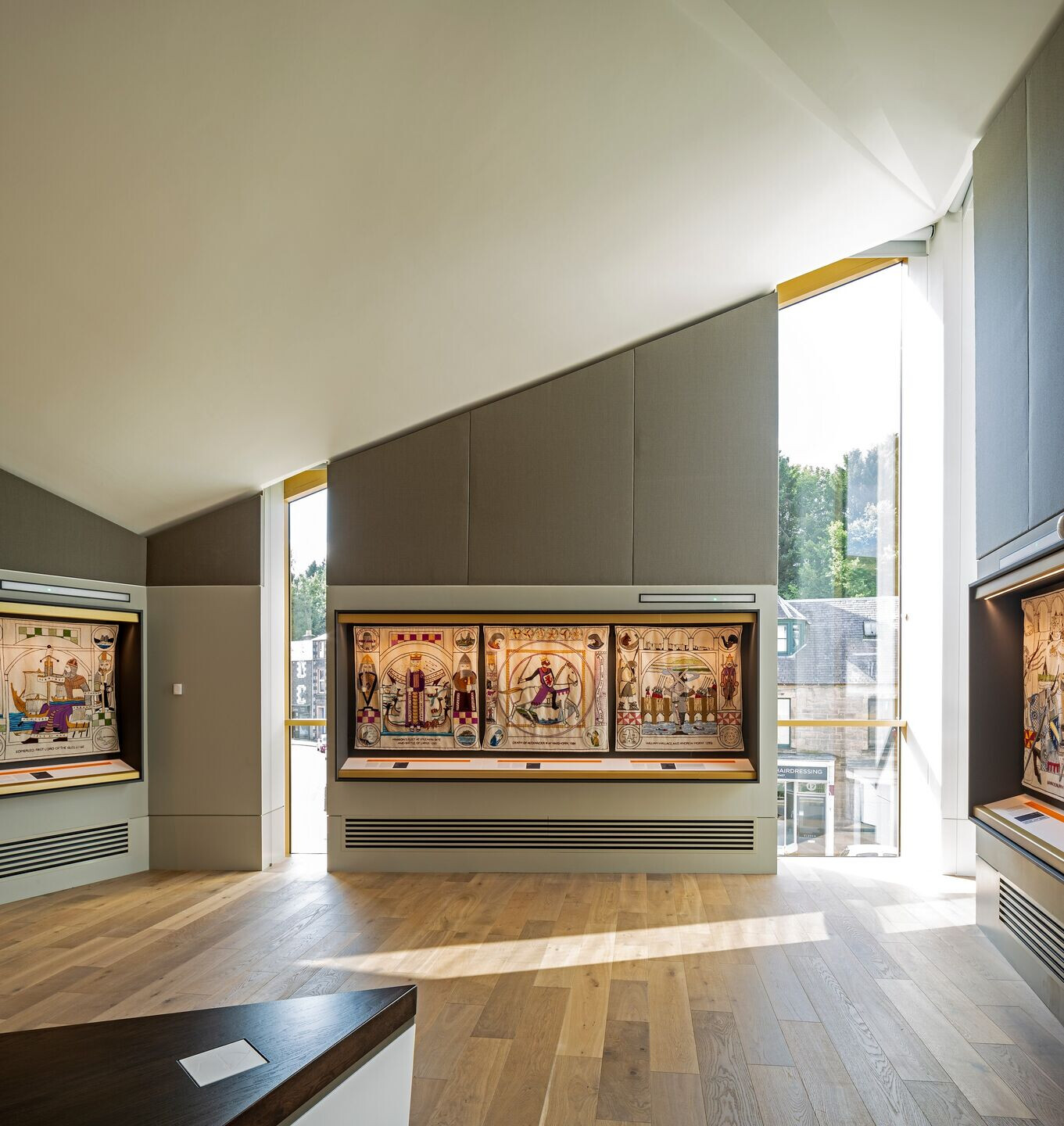The Great Tapestry of Scotland Gallery is in Galashiels at the heart of the Scottish Borders. The building was designed to house the Great Tapestry of Scotland; a unique visual history of the nation crafted by the hands of a thousand stitchers.
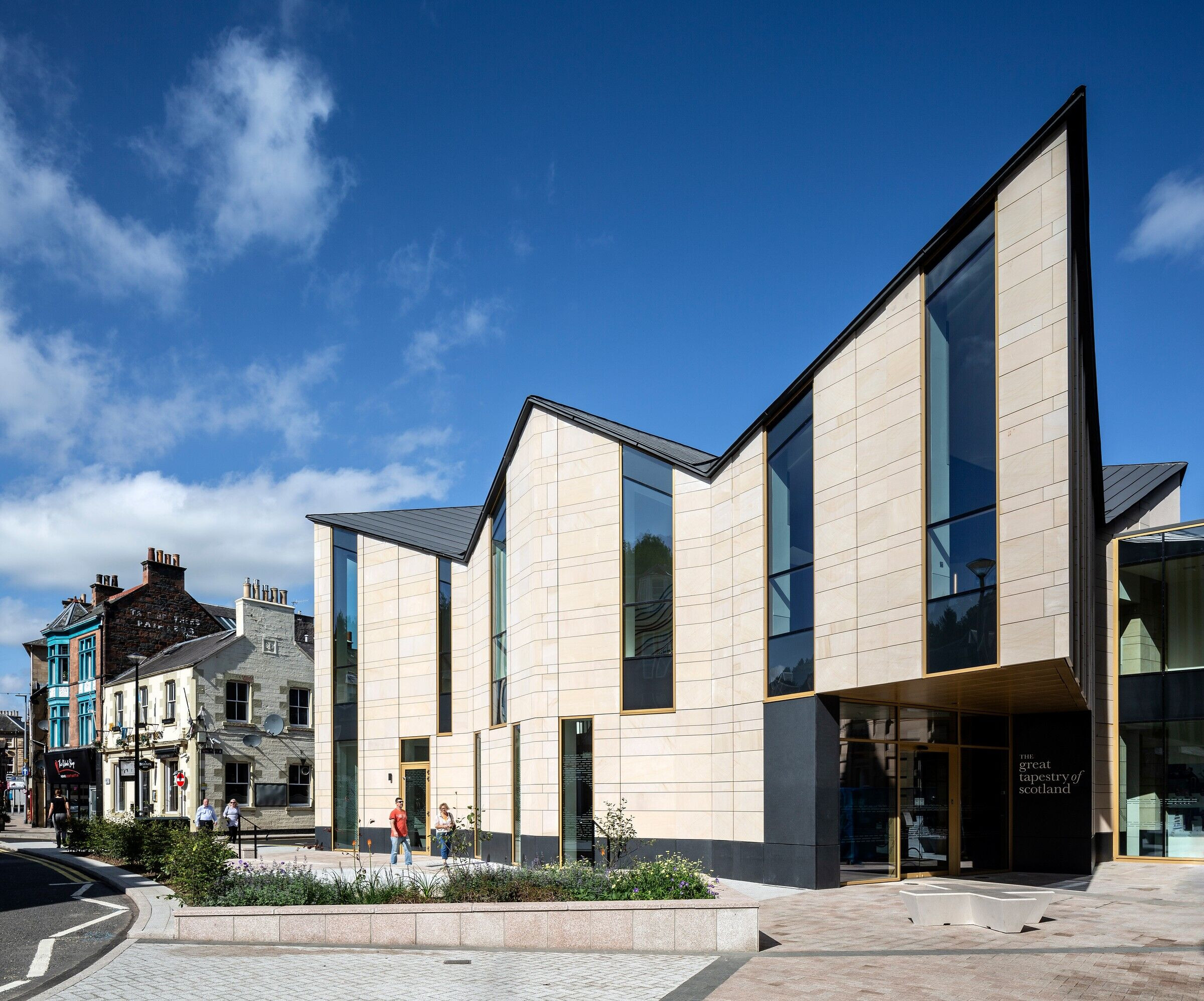
The Great Tapestry of Scotland was designed by Andrew Crummy to a narration written by Alistair Moffat, with the grand vision imagined by Alexander McCall Smith. The tapestry, at almost 143 metres (469 ft) in length, is a linear pictorial history of Scotland depicting key events going back 12,000 years. It was meticulously embroidered in communities across Scotland led by master stitcher Dorie Wilkie.
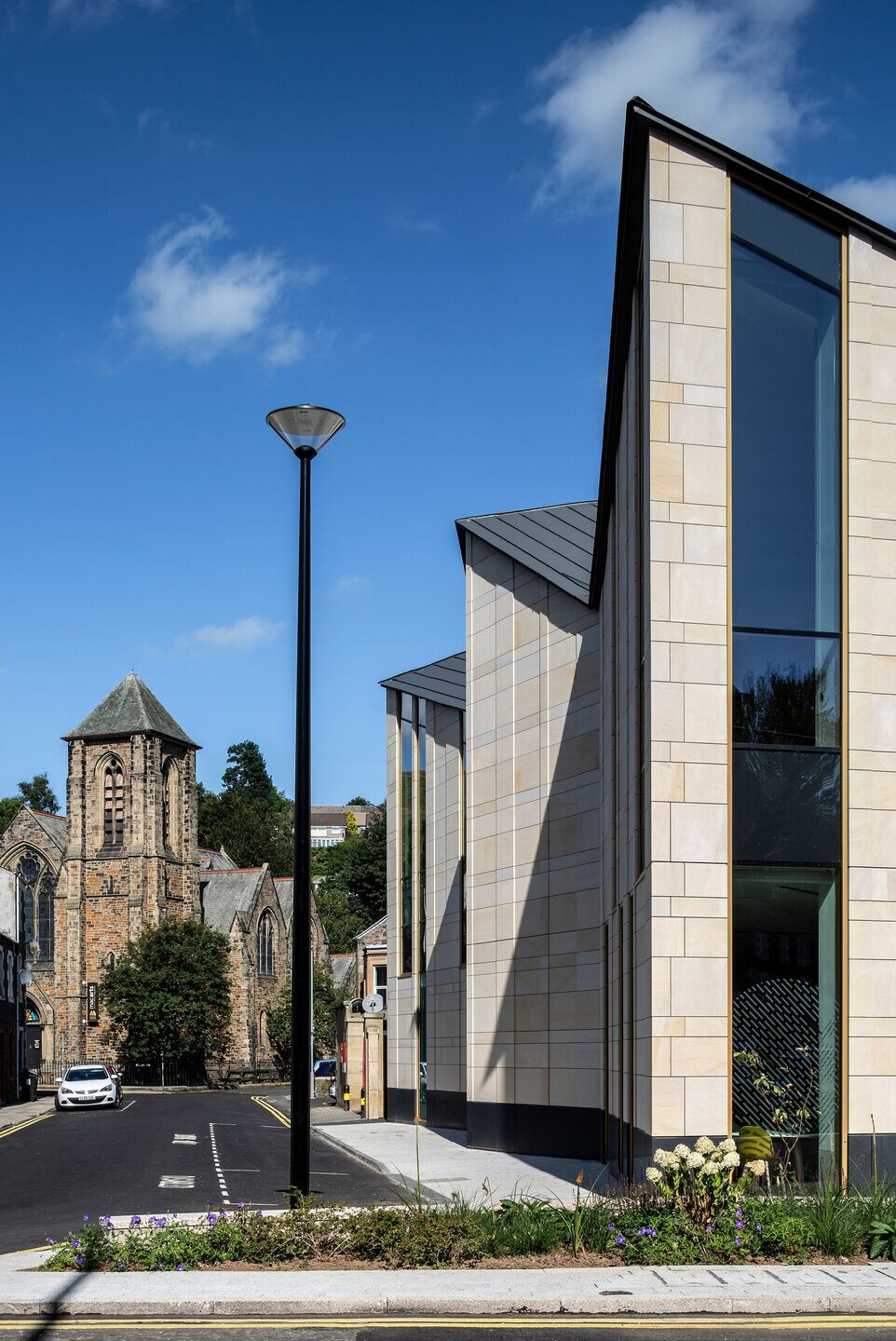
Our architectural vision was to create a distinctive building rooted in its physical and historical context, with a special room for the tapestry at its heart. The dramatic geometric roof design is inspired by the unique roofscape of towers, dormers, gables and pitched roofs that defines the architectural character of Galashiels. As you approach Galashiels the roofs of the town unfold before you. The new gallery inserts into this roofscape as a contemporary and playful re-imagining of the traditional Victorian pitched roof.

The ground floor houses a temporary gallery space, reception, shop, café, and education space. The tapestry gallery is on the first floor; a dramatic room formed from folding walls and ceiling. The gallery is precisely shaped to house the tapestry. The artwork wraps around a series of radial display walls to form a continuous linear display. At the four corners of the gallery are tall windows, each looking to one of the four hills that surround Galashiels.
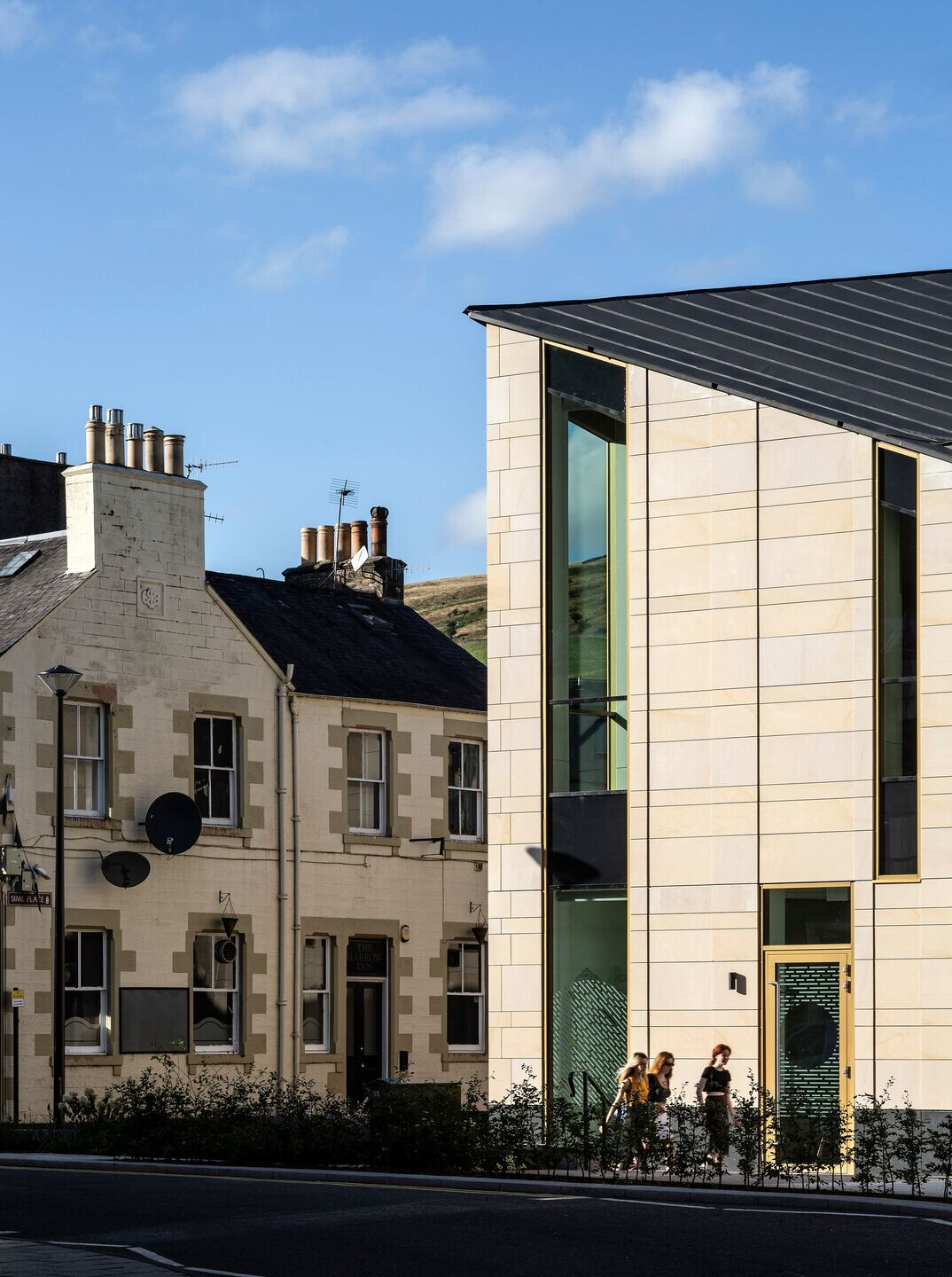
The palette of colour and texture in the interior design reflects the nuance and detail of the tapestry, as well as the rich landscape of the Borders. The walls of the gallery are clad with fabric woven on the Isle of Bute and finished locally in Galashiels. The bespoke colour was designed for this project, inspired by the ever-changing colours of the hills surrounding Galashiels.

The scale and massing of the visitor centre was designed in response to the surrounding Victorian townscape. Due to concerns regarding UV light and conservation of the tapestry, it was not possible to have a lot of windows into the gallery. To break down the mass of the building to a scale more appropriate to its neighbours we folded the external walls creating subtle undulating bays. These bays relate to the rhythm of the windows, doorways, and corner turrets of Channel St.
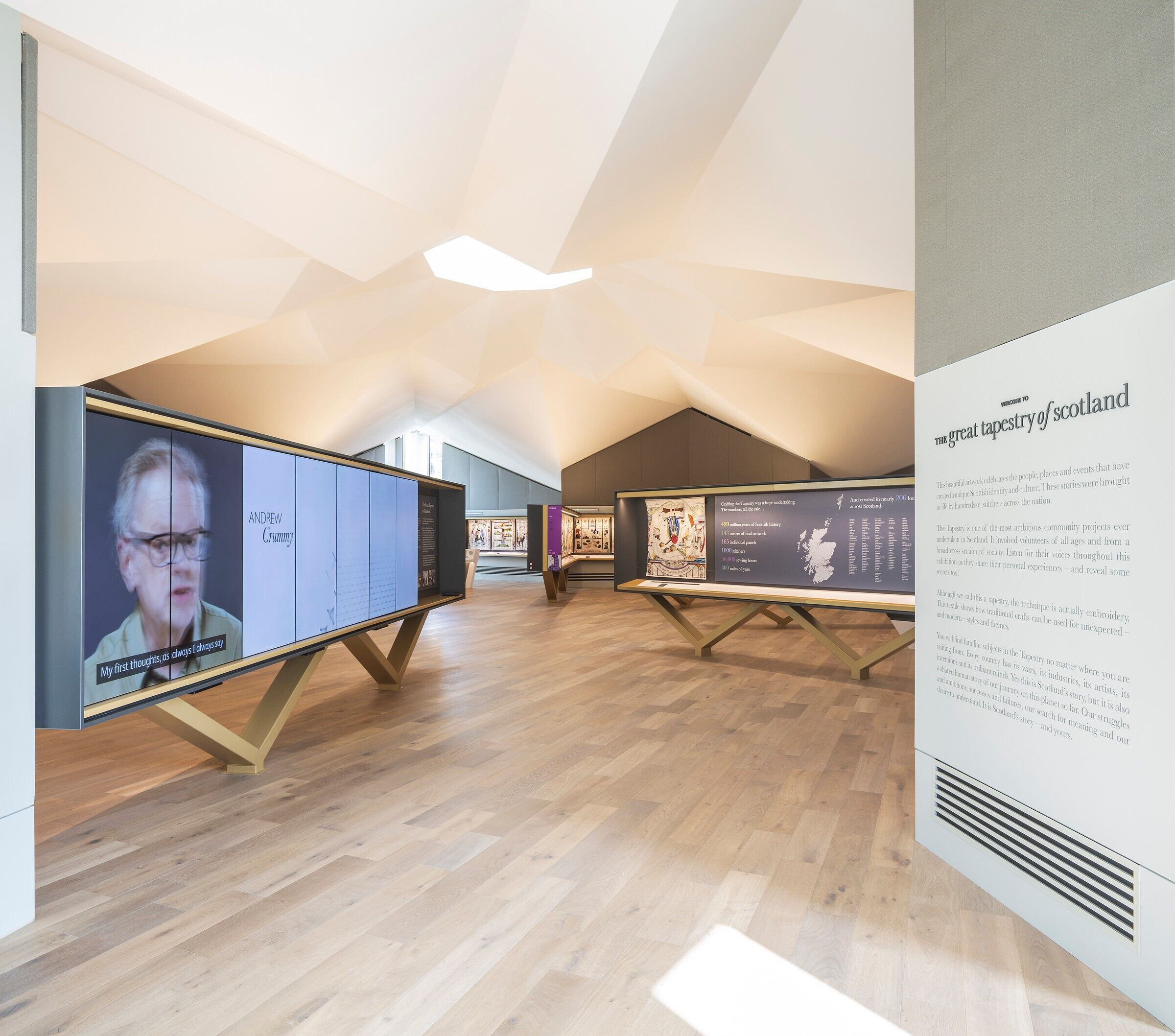
The gallery is connected by a glazed link to the old Post Office building. The Post Office opened to great fanfare in 1896 and was a symbol of Galashiels’ prosperity as a booming textile town of the nineteenth century. The subtle articulation and detailing of the stonework elevations to the Post Office inspired the stepping stone façade of the visitor centre. Vertical and horizontal bands of stonework envelope the building, like the warp and weft of a textile.
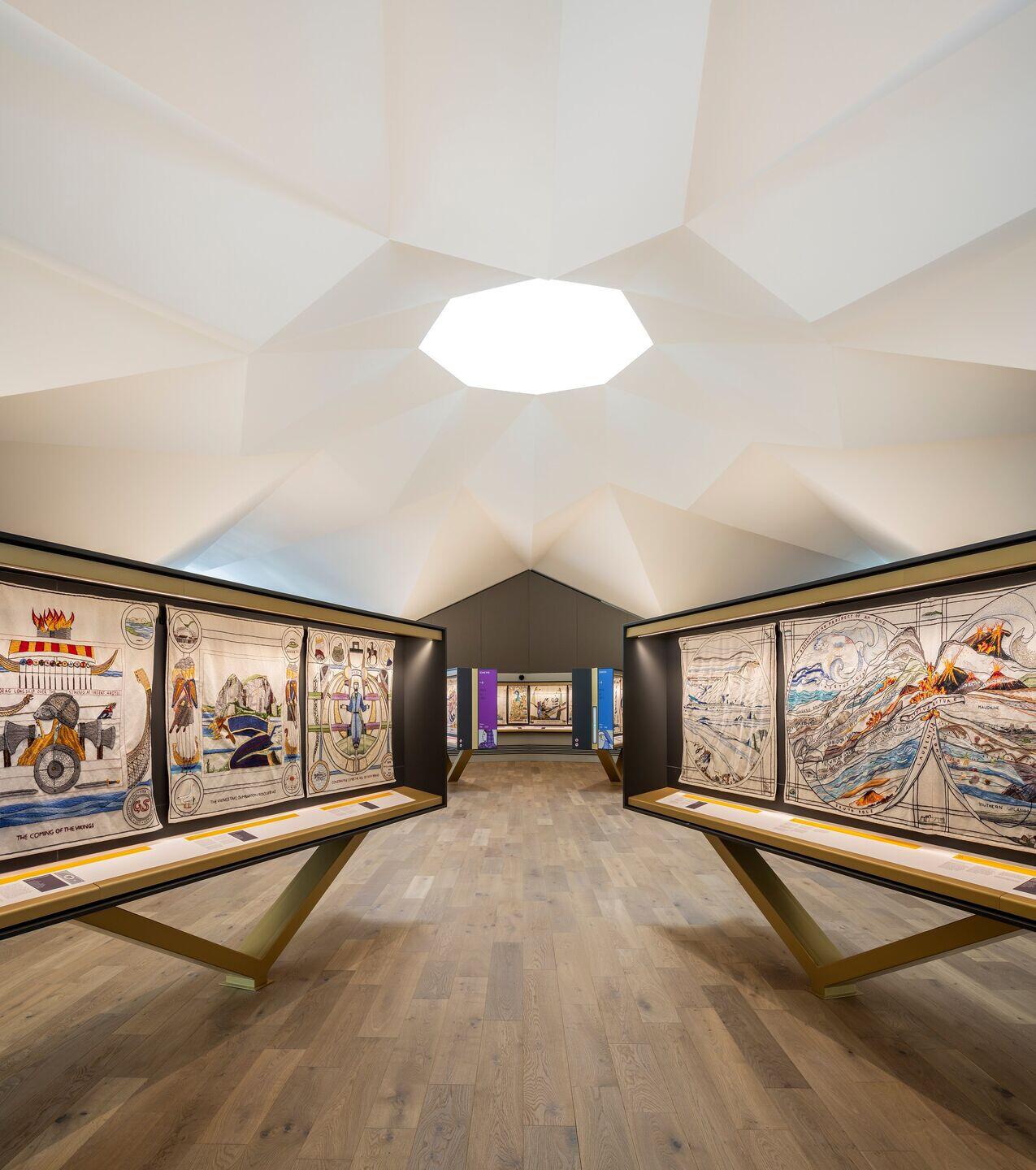
The gallery acts as an anchor for town centre regeneration. Supported by the new Borders Railway line linking Galashiels to Edinburgh, the gallery will bring new activity to the high street supporting the existing retail offer and inspiring a 21st century version of this textile town.

